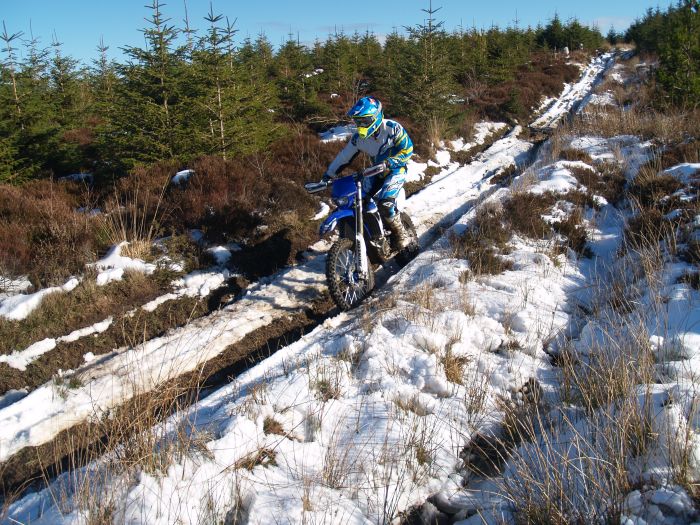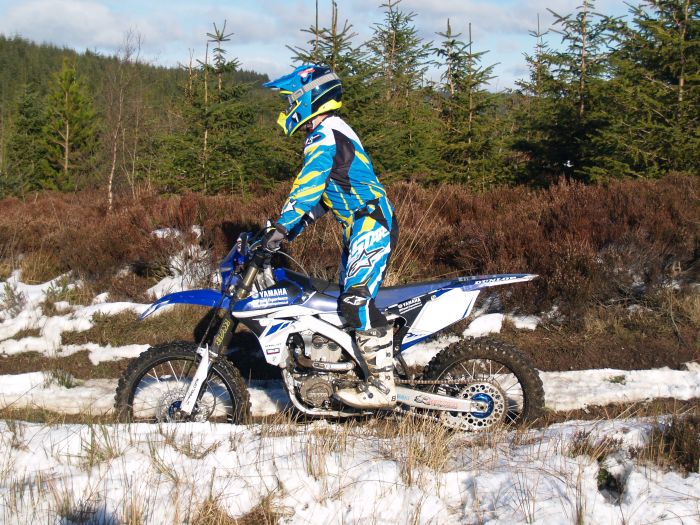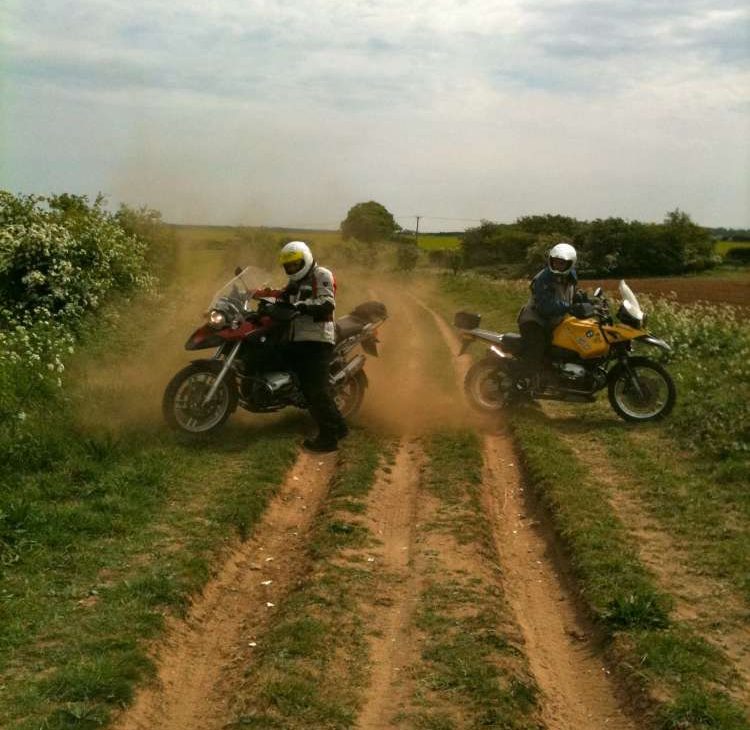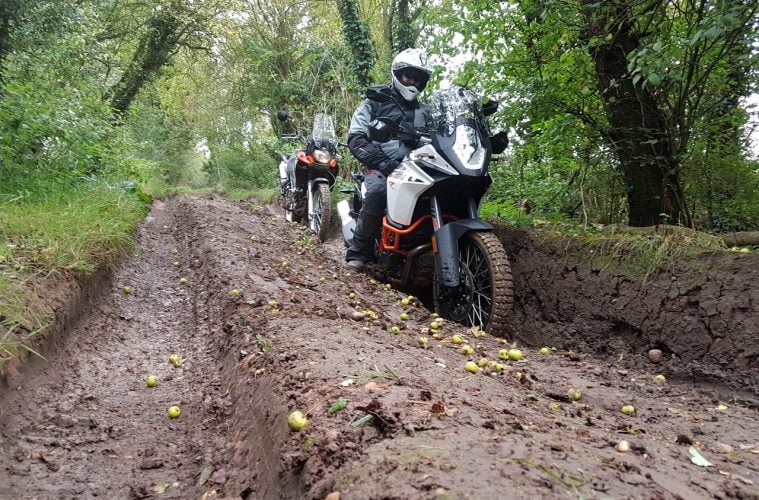If you fancy a spot of green lane riding or are thinking of heading off to ride in the great unknown, it’s worth knowing how to ride safely in ruts. Dylan Jones from the Yamaha Off Road Experience explains the technique.

1. Keep your eyes out front
One of the most important things to remember when riding off-road is to look a long way ahead to see the obstacles or ruts in plenty of time, to enable the best choice of line and decide whether you will need to sit or stand.
If you don’t see the rut until you are in it, there is a fair chance that you will end up cross rutted and falling off. Also, try and slow your speed to a level that your are comfortable with before you enter as heavy braking in the rut will make you lose balance.
2. Analyse your approach
There are two approaches to rut riding depending on the depth, width and severity of the rut and your riding ability. You can either stand up on the pegs and try and balance through or sit down and paddle along with your feet. This decision will usually depend on how deep, narrow, long or twisty the rut is.
Generally the narrower the width of the rut, the more difficult it is to ride. In a rut that is very deep (around footrest height) and narrow we would generally sit down and get one or two feet off the footrests ready to dab and ski to help keep the bike upright. If the going is less severe and not as deep we will try and remain standing up on the footrests.
3. Line up your wheels
As you approach the rut make sure you have the front and back wheel lined up so that they follow each other into the same channel and you do not end up getting cross rutted.

4. Get your standing technique right
The technique for standing up through a rut is to look well ahead and focus further up the track rather than looking down at the front wheel.
Stand up with legs reasonably straight and leaning so your weight is forward on the handlebars to keep the front wheel in the base of the rut. Make sure to cover the clutch and front brake with one or two fingers in case you need to use them.
5. Maintain momentum
Providing the track is not going downhill try to maintain a small amount of constant throttle rather than going on/off with it. This will help to keep the bike going along smoothly. We control the speed of the bike using the clutch, if you feel yourself going a bit quick, just slightly ease the clutch in to regain your balance.
6. Control your weight distribution
To keep your balance, you will need to weight the footrests and use your upper body. If you want the bike to go towards the left, push weight down through the left footrest, and vice versa to the right. If you need to have a dab with your foot to keep your balance, you can do this without sitting down.
If things are starting to go completely wrong, get sat down and put your feet on the floor before you end up upside down! Sit towards the front of the seat to help keep the front wheel in the base of the rut. As with standing up, look ahead and cover the controls, keep a constant throttle and use the clutch to control your speed.

7. Make sure to use your feet if sat down
If the rut looks very deep you will need to ride through it sat down with one or two feet off the foot pegs. A lot of beginner riders make the mistake of trying to ride ruts sat down without taking their feet off the pegs. It is very difficult to balance a bike sat down because it is now much more difficult to weight the footrests as most of the weight is going down through your backside into the seat.
Therefore, the likelihood is that you will go five or ten metres along the rut, loose balance and by the time you go to put a foot down the bike will already be over on its side, especially on a bigger adventure bike.
You should use one or two feet to dab on the ground as you go along to keep your balance. Your legs and feet will need to be off and out in front of the footrests, just above the ground, with a slight bend in the knees.
If you are going downhill in a rut sitting down, try to keep the right leg on the footrest so you are still able to use the rear brake to slow down.
8. Don’t let your feet drag on the floor
Unless it’s really muddy, try not to drag your feet on the floor as it will pull you towards the back of the seat. If you are sliding towards the back of the seat, you must pull yourself forward using your arms.
If you sit at the back of the seat, the front wheel will start to climb out of the rut. Don’t go too slowly and try and keep the bike driving forward.
9. Final words of warning
On larger adventure bikes, unless the rut looks pretty easy, we will usually go for the safety first option of sitting down rather than trying to look flash standing up. Obviously, the better the rider, the more chance you have of standing up along a rut.
Gain access to every ABR masterclass
In each issue of Adventure Bike Rider magazine we feature a riding masterclass, showcasing the skills you need to handle your adventure bike on the road and on the trails. You can read them all online by signing up to the digital library, which gives you access to the latest issue of ABR, as well as a decade’s worth of back issues.
At the moment you can save 50% off your subscription with the code SUMMERSAVE50 at checkout, so sign up here soon to take advantage of this great saving. Ride safe!







